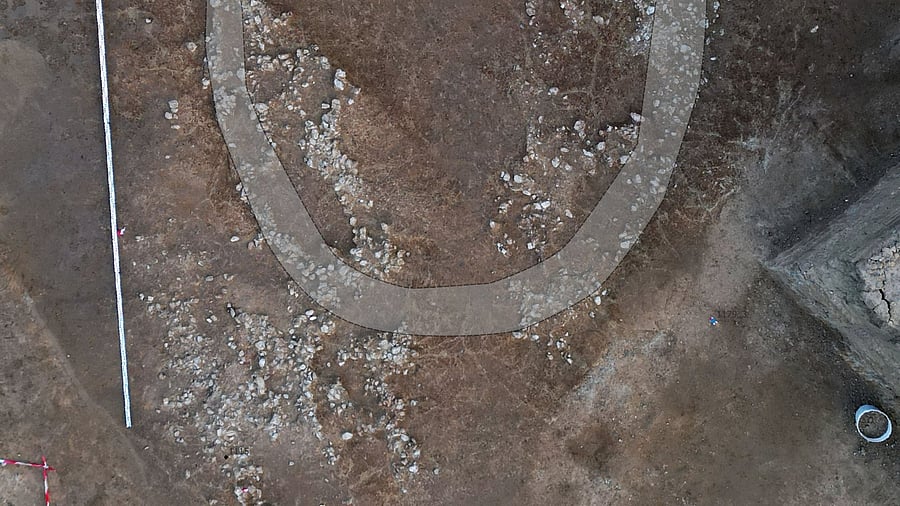
Oldest Neolithic dwellings in France
Credit: X/@Inrap
A first-of-its-kind and best-preserved Neolithic village in European history was discovered by French archaeologists. It is the second known site from the Early Cardial period in France.
The settlement once stood on the banks of modern-day Cavalaire-sur-Mer, France marking the arrival of the Neolithic era in the country. It signifies the change from a nomadic way of life to a settled farming community. This shift is identified as the Cardial period.
The earliest farmers in France are from this settlement, which is thought to have existed as early as 4800 BCE.
The cultural movement traveled from East to West as experts believe is substantiated by the discovery of this settlement. The cultural movement began in Turkey and spread westward through Italy.
It is a rare occurrence to find well-preserved open-air villages as the settlers built their homes using perishable materials. Most Neolithic remains are found in rock shelters or caves. In the south of France, there are some sites that have well-preserved remains such as pits and postholes that provide house plans.
This open-air Neolithic village only the second to be discovered in France offers unique insights into the past and details into prehistory.
Buried under a 4-meter layer of alluvial deposits a structure associated with the Early Cardial period was discovered in a small costal Cavalaire. Its antiquity is confirmed by its stratigraphic location, 1.30 meters below the Middle Neolithic habitation levels, as well as the remnants of ornamented pottery that were found.
As per the press release from Inrap, “It suggests that other remains of the first farmers in France still lie beneath the thick alluvium of the Mediterranean rivers and streams.”
The structure that was excavated includes two parallel stone walls and a small apse, damaged by geological processes and later modification according to LBV.
With walls reinforced using a mixture of raw earth and gravel, a technique that creates a more compact and distinctive sediment, the approximate dimensions of the structure are 7 x 5 meters.
As per Interesting Engineering, Inrap noted that “several isolated hearths were found along with a concentration of hearth structures,” covering a surface area of 43 square feet, with post holes likely located on the periphery.
The design of the house is an indication that the Cardinal cultural movement originated in Anatolia, Turkey and spread through Southern Europe, North Africa and the Near East.
Being the first “agro-pastoral” and “sedentary” communities in Western history, there is little physical evidence available due to the materials they used. Hence the Cavalaire settlement is of great importance to the study of the period. The plans and construction techniques of these early structures remain largely undocumented.
On a sprawling 45,208 square feet of land, the French government commissioned the rehabilitation project, which began in May. January will mark the end of the excavations led by the National Institute for Preventive Archaeological Research (Inrap). However, the site will continue to help archaeologists piece together a picture of Europe's early farmers.
